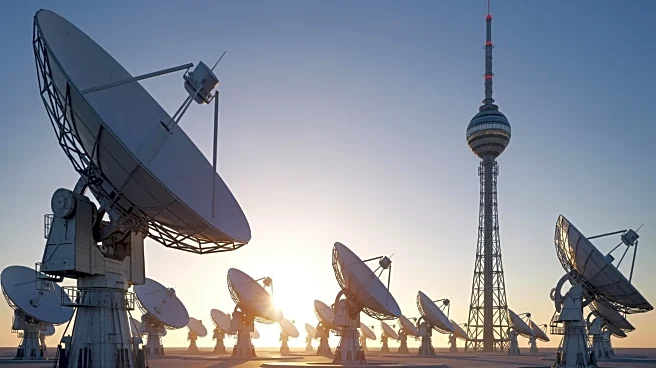What's Happening?
The Federal Communications Commission (FCC) is preparing to vote on a proposal to reconfigure the Upper C-band spectrum, ranging from 3.98GHz to 4.2GHz, for auction to support 5G and 6G services. This
initiative aligns with the FCC's mandate under the One Big Beautiful Bill Act (OBBBA) to auction 800MHz of spectrum in the coming years. The FCC aims to auction at least 100MHz of the Upper C-band by July 2027, with the possibility of extending this to 180MHz. This move is part of a broader strategy to enhance network capacity and support next-generation applications. The proposal has garnered interest from major carriers like AT&T, T-Mobile, and Verizon, who have advocated for the release of up to 220MHz of this mid-band spectrum. The FCC's decision is expected to be made at its November 20 open meeting.
Why It's Important?
The auction of the Upper C-band spectrum is crucial for expanding the capacity and reach of 5G and 6G networks in the United States. This mid-band spectrum is highly valued for its ability to support both fixed and mobile broadband services, driving innovation and benefiting consumers. The decision to auction this spectrum could significantly impact the telecommunications industry, providing opportunities for carriers to enhance their service offerings. Additionally, the move could influence the future of spectrum sharing models, such as those used in the CBRS and 6GHz bands, which are important for Wi-Fi and other wireless services. The outcome of this auction could also affect satellite service providers like Intelsat and SES, who currently use portions of the Upper C-band.
What's Next?
Following the FCC's vote, a comment and response period will be initiated to gather feedback from stakeholders. The auction process is expected to proceed swiftly, given the FCC's commitment to meeting the OBBBA's timeline. The telecommunications industry, including major carriers and satellite service providers, will likely engage in discussions to address concerns and negotiate terms related to spectrum allocation and usage. The FCC's decision could also prompt further exploration of additional spectrum bands for future auctions, ensuring a steady pipeline of resources for wireless services.
Beyond the Headlines
The reconfiguration and auction of the Upper C-band spectrum could have long-term implications for spectrum management and policy in the U.S. The decision may set a precedent for how spectrum is allocated and shared among different users, balancing the needs of terrestrial wireless services and satellite operators. The FCC's approach to this auction could influence future regulatory decisions and the development of new technologies that rely on efficient spectrum use. Additionally, the auction's outcome could impact international spectrum policies, as other countries observe and potentially adopt similar strategies.













